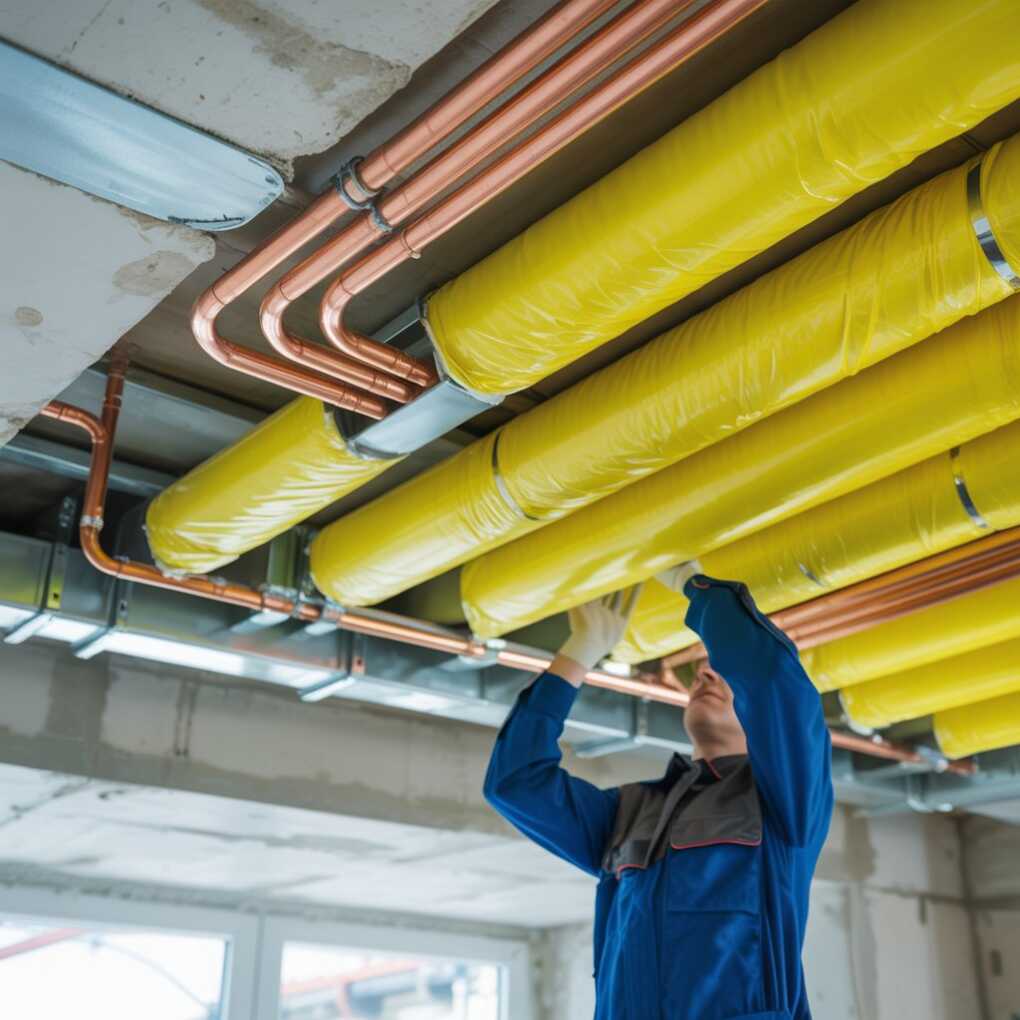In HVAC construction, contractors are under increasing pressure to complete projects faster while maintaining high performance standards. Labor shortages, rising material costs, and tighter schedules make finding solutions that enhance efficiency and durability essential. One of the most impactful innovations in this area is using pre-insulated linesets. These components streamline the installation process while offering thermal benefits and durability that help reduce ongoing maintenance and energy consumption. We will explore how pre-insulated linesets redefine expectations for HVAC system efficiency, installation timelines, and long-term operating costs.

Key Ways Pre-Insulated Linesets Offer Long-Term Savings and Faster Installation
Streamlined Installation Saves Hours on the Job Site
Traditional HVAC lineset installation often requires multiple steps: cutting copper tubing, wrapping it with insulation, sealing seams, and verifying all measurements. Each action takes time, requires multiple tools and materials, and often introduces the risk of inconsistent workmanship. Pre-insulated linesets, such as those available at https://ad.engineering/linesets/, eliminate much of this complexity by arriving on-site already insulated and sealed, allowing technicians to skip several time-consuming tasks. Instead of constructing insulation from scratch, workers only need to uncoil and connect the lineset to the indoor and outdoor units.
This efficiency can cut installation hours, particularly on large-scale residential or commercial projects. The reduction in man-hours doesn’t just save money, but also allows HVAC contractors to complete more jobs in less time, improving revenue and project turnover rates. In high-demand environments, quickly moving from one installation to the next can be a decisive factor in staying competitive.
Factory-Sealed Insulation Reduces Energy Loss and Enhances Longevity
One of the core benefits of pre-insulated linesets lies in the uniformity and reliability of their factory-applied insulation. Traditional field-installed insulation often develops gaps, compression points, or weak seams, particularly in hard-to-reach spaces. These flaws lead to thermal losses over time, reducing the overall efficiency of the HVAC system and increasing energy costs for the end user. In contrast, pre-insulated linesets are manufactured under controlled conditions, ensuring consistent insulation thickness, moisture resistance, and vapor barrier performance.
This factory precision dramatically reduces the potential for heat gain or loss, especially in extreme climates. As a result, systems operate more efficiently over their lifespan, leading to measurable savings on energy bills. In addition, because the insulation is more durable and less prone to degradation, building owners and managers benefit from lower maintenance needs and fewer service calls related to insulation failure or refrigerant performance.
Reduced Risk of Moisture Intrusion and Mold Growth
Moisture is one of the leading causes of insulation breakdown and indoor air quality issues in HVAC systems. When conventional lineset insulation is improperly sealed or exposed to humidity, it can absorb moisture over time. This intrusion reduces the insulation’s thermal resistance and can promote mold growth, posing risks to both the system and the health of occupants. Pre-insulated linesets, such as those manufactured by AD Engineering, are designed to minimize this risk. Their closed-cell insulation material and seamless vapor barriers prevent water from penetrating the lineset, even in humid or wet environments. This design advantage leads to a longer-lasting insulation system that won’t require frequent replacement or remediation. The cost of addressing mold damage or water-soaked insulation can be substantial, so using a pre-insulated product reduces the likelihood of these expensive problems ever arising.
Minimized Waste and Material Handling on Site
Construction waste is not just an environmental concern—it’s also a financial one. Traditional HVAC installations often produce waste in the form of insulation scraps, adhesive residues, protective wrappings, and discarded fittings. Managing and disposing of these materials takes time and incurs additional costs. Pre-insulated linesets simplify logistics by integrating the copper tubing and insulation into one cohesive unit. Installers don’t need to carry multiple materials, calculate insulation cuts, or spend time cleaning up excess wrap. This leads to cleaner job sites, fewer errors, and better organization. This reduced footprint can significantly affect efficiency and compliance for projects with strict environmental regulations or tight workspace constraints. It also streamlines inventory management, as fewer separate components need to be ordered, tracked, and stored during a project’s execution.
As the HVAC industry evolves, the demand for faster installations, better energy efficiency, and longer-lasting materials is changing system design and implementation. Pre-insulated linesets offer a compelling solution by reducing the number of installation steps, minimizing material waste, and providing a consistent thermal and moisture barrier. These benefits translate directly into contractor time savings and long-term cost reductions for building owners. The upfront investment in high-quality pre-insulated linesets is often offset by lower labor costs, fewer service issues, and improved system performance over time.
